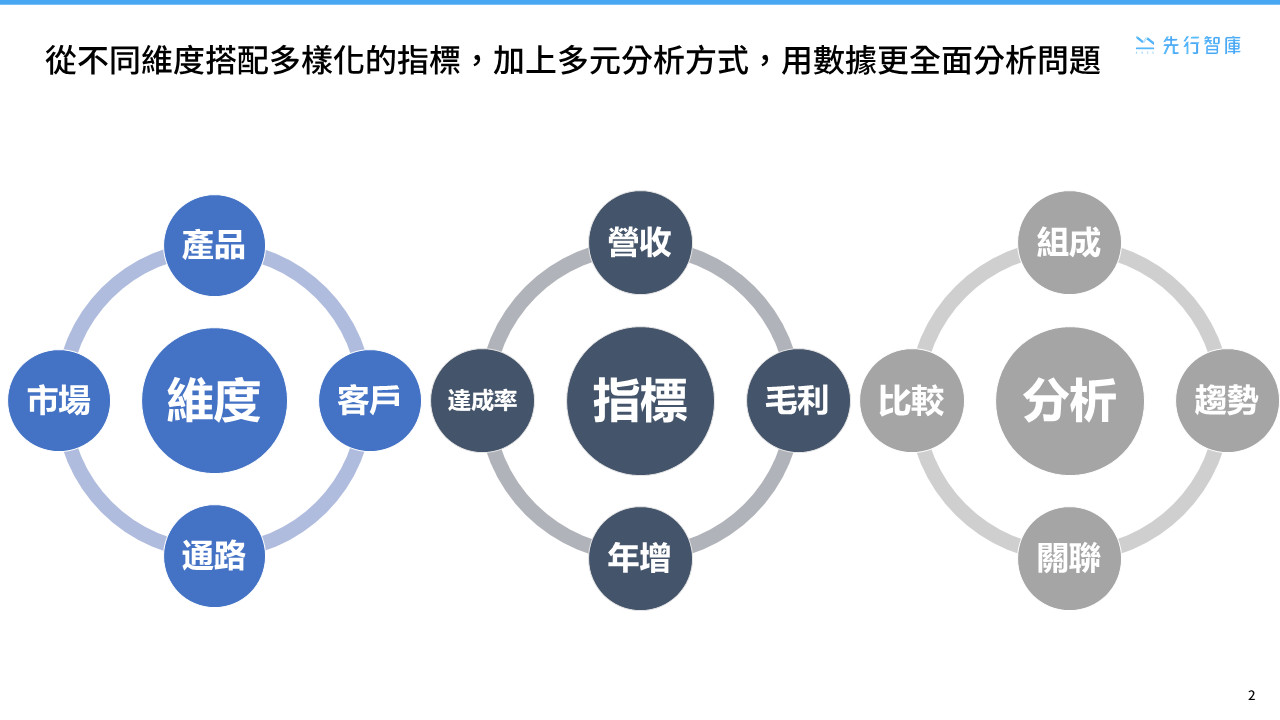In today’s data-driven era, business decision-making is increasingly reliant on data analytics. However, it’s not enough to have data, it’s more important to analyze the data effectively to really uncover the root cause of the problem and work out the best solution.
When faced with data, many people often fall into the dilemma of “seeing the trees but not the forest”, and draw conclusions based on a single indicator or local phenomenon, leading to wrong decision-making. If you want to break through the blind spots of thinking, you must cultivate a global view of data problem analysis, and comprehensively analyze problems from multiple dimensions, multiple indicators, and multiple angles in order to make more accurate judgments.

What is the “Data Problem Analysis”?
It is a set of methods to do data analysis from three aspects, which are “dimensions”, “indicators”, and “analysis”. This method emphasizes the integration of data from different sources from a macro perspective and cross-analysis from multiple dimensions to fully understand the whole picture. It does not just focus on the changes of a single indicator, but through the correlation between different indicators, as well as the causal relationship hidden behind the data.

How to apply the “Data Problem Analysis Method”?
- Establish analytical dimensions: First, you must first identify the relevant dimensions of the analytical problem. Dimensions are like the “position” or “department” you stand on when you observe a problem, and different dimensions can provide different perspectives and give you a more comprehensive understanding of the problem.
- Set key indicators: Each dimension needs to set corresponding key indicators, which are specific data to measure the degree of achievement of goals, and different indicators allow you to quantify problems from different aspects and track progress.
- Choose multivariate analysis methods: Analysis refers to the use of data analysis methods, such as “composition”, “trend”, “correlation”, “comparison” and other multivariate analysis methods, to find out the correlation between data, trend changes, and dig out hidden problems, and ultimately help you make the right decision.
For example, if you are a vice president of business, you will need to develop an overall sales strategy, which will correspond to relevant data intelligence. This is where you can use this holistic approach to data problem analysis to find insights from the data that are useful for decision-making. He can analyze the revenue, gross profit, annual growth rate and other indicators from the dimensions of “product”, “customer”, “channel” and “market”.
It is also possible to compare the performance of different sales teams across different product lines and markets by analyzing the “compliance rate” metric. You can also understand the sales proportion of each product line in different channels through composition analysis, and then adjust the channel strategy. There is no absolute order of use in the relationship between these three, and the main purpose is to remind yourself that you can analyze from multiple angles.

Advantages of the “Data Problem Analysis Method”
- Break through the blind spots of thinking: Avoid jumping to conclusions based on a single indicator or local phenomenon, and effectively avoid misunderstandings in thinking.
- Insight into the whole picture of the problem: Comprehensively analyze the problem from multiple dimensions and indicators to grasp the whole picture and essence of the problem.
- Improve the quality of decision-making: Make more accurate and effective decisions based on more comprehensive and in-depth data analysis results.
In order to effectively practice the holistic data problem analysis method, in addition to mastering the above methods, it is necessary to continuously accumulate experience in data analysis and cultivate a keen business sense in order to turn data into insights and make correct business decisions. “Data Problem Analysis” is a systematic data analysis method that can help enterprises break through blind spots, gain insight into the whole picture, and make more informed decisions. In the era of information explosion, mastering this analysis method will undoubtedly become the key to enhancing the core competitiveness of enterprises.

KSCC is a management consulting company in Taiwan. Our services include corporate in-house training, consulting, and leadership management.For more information about our corporate services, please feel free to visit our website: https://kscthinktank.com.tw/custom-training/
